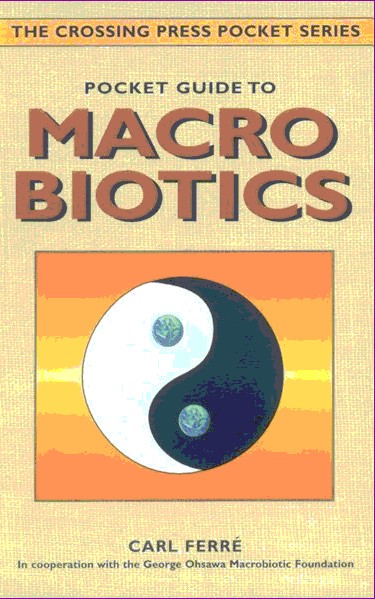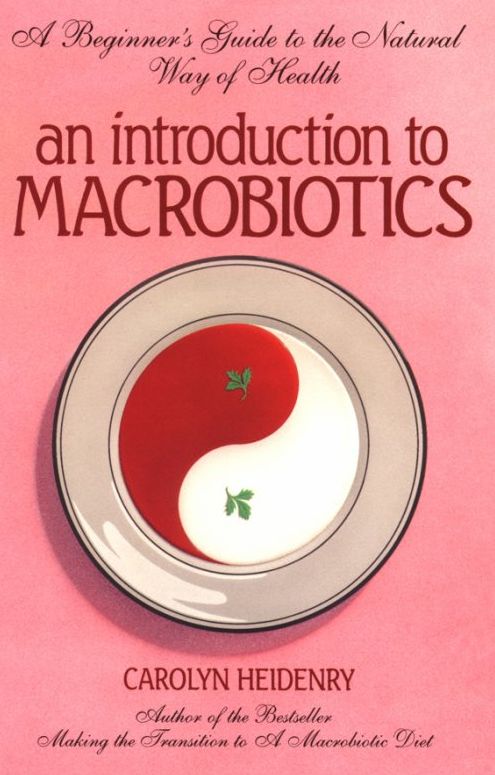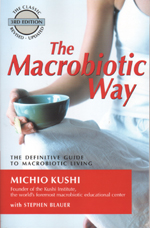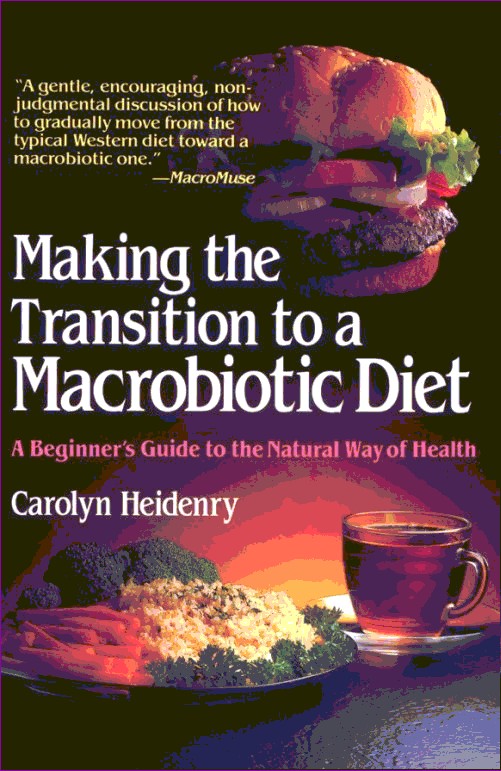|
| |
|

 |
Pocket
Guide to Macrobiotics
by Carl Ferre
This small guide through the
dietary principles of macrobiotics is loaded with the fundamentals of the
diet, but it also offers sound advice on healthy eating. The macrobiotic
diet focuses on whole grains, fresh vegetables, and natural (i.e. not
refined) foods, along with the principles of yin and yang that govern the
philosophy—all of which are explained clearly and succinctly:
“A basic
tenet of macrobiotic thinking is that all things—our
bodies, foods, and everything else—are
composed of yin and yang energies. Macrobiotic
practice emphasizes the two food groups—grains and vegetable—that
have the least pronounced yin and yang qualities, making it easier to
achieve a more balanced condition within the natural order of life.”
Although macrobiotics is more than
a diet—in
fact, its principles can be applied to all areas of life—this
book focuses on its applications to diet and health. A macrobiotic regimen
promises many blessings, among them greater energy, relief from pain and
illnesses, renewed enjoyment of food, a more fulfilling sex life, and
improved sleep. |
|

 |
An Introduction to Macrobiotics
A Beginner's Guide to the Natural Way of Health
by Carolyn Heidenry
This clear and concise book
introduces the concept and basic principles of macrobiotics, describes a
macrobiotic diet, and lists foods to avoid. Short, inexpensive, easy to
read, and to the point, this is a great place to begin your exploration of
this powerful approach to self-responsibility for health and happiness. |
|

 |
The Macrobiotic Way
Complete Macrobiotic Diet
and Exercise Book
by Michio Kushi, forward by John Denver From
a reviewer on Amazon.com
As a complete and utter novice to
Macrobiotic dieting & lifestyle, I couldn't ask for a better definitive
guide! This book avoids the lofty, philosophical language usually associated
with natural & so-called alternative diets, and you don't have to
drive a 1970 Volkswagen van to be in sync with its format! The staple foods
are clearly explained (along with detailed definitions of the Asian foods,
which may be fairly obscure to most Americans, me included). I became
interested in this diet when Madonna brought it mainstream, but had
reservations about my ability to manage it myself .... would I need a staff
of professional celebrity-worthy chefs, like Madonna probably has, or could
I follow its format on an every-day basis, including shopping & stocking the
kitchen? With this book, the answer is yes. I recommend it not only
for a macrobiotic diet, but also for vegan dieters (as it excludes dairy &
eggs, as well as meat). |
|


|
Power Eating Program
by Lino Stanchich
How we eat is as important
as what we eat. For decades Lino Stanchich has researched,
experimented with, taught, and served as a living example of the benefits
that flow from details such as how much we chew, our meal schedules, and our
states of mind at meal time. In this book he introduces a number of simple,
powerful practices that anyone can implement to complement the intentional
selection of foods and cooking techniques taught by other macrobiotic
teachers.. By chewing very well, for example, Lino explains that we can
improve digestion dramatically, reducing the energy we expend to extract
nutrition from food and minimizing the burden on our digestive organs. In
fact world-renowned macrobiotic guru Michio Kushi tells his counseling
clients and students that chewing well can cut in half the time required to
recover from degenerative illness. This small book can make a big difference
in your outlook on life and on your health. |
|

 |
Making the
Transition to a Macrobiotic Diet
A Beginner's Guide to the
Natural Way of Health
by Carolyn Heidenry
Neither a cookbook nor a treatise
on the theory of macrobiotics, this volume falls into the category of
general advice about switching from the standard American diet (SAD) to a
more balanced way of eating that will sustain life and good health. Heidenry
enumerates the categories of foods described by a macrobiotic view of diet,
and endorses gradualism in making the change.
A comment from Morgan Jones
The challenge with a gradual
approach to a better diet is this: When we are still eating any extreme
foods (e.g. meat, milk, sweet drinks and desserts, etc.), the strong energy
of these non-human foods is a more powerful negative influence on health
than the subtle, slow, and steadily healing effect of true human foods
(whole grains, vegetables, etc.). And when we eat any food that is extreme
in one way, we will naturally crave a food that is extreme in the opposite
way to create the balance the Universe demands for all its creatures.
Creating balance through extremes makes healing much more difficult. That
said, if gradually is the only way that will work for you, then this
book can be a very useful ally. |

|
